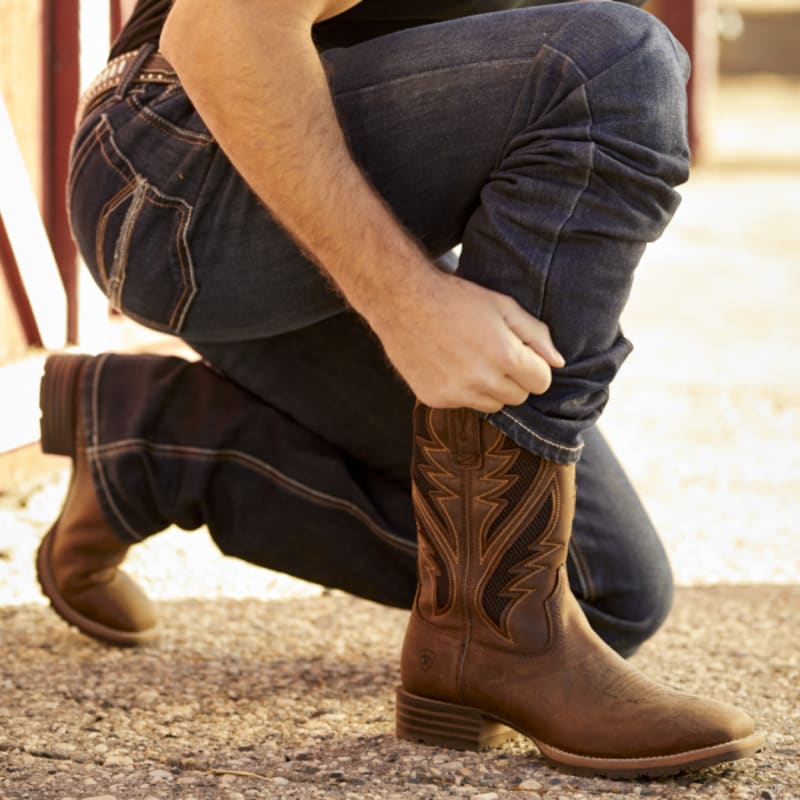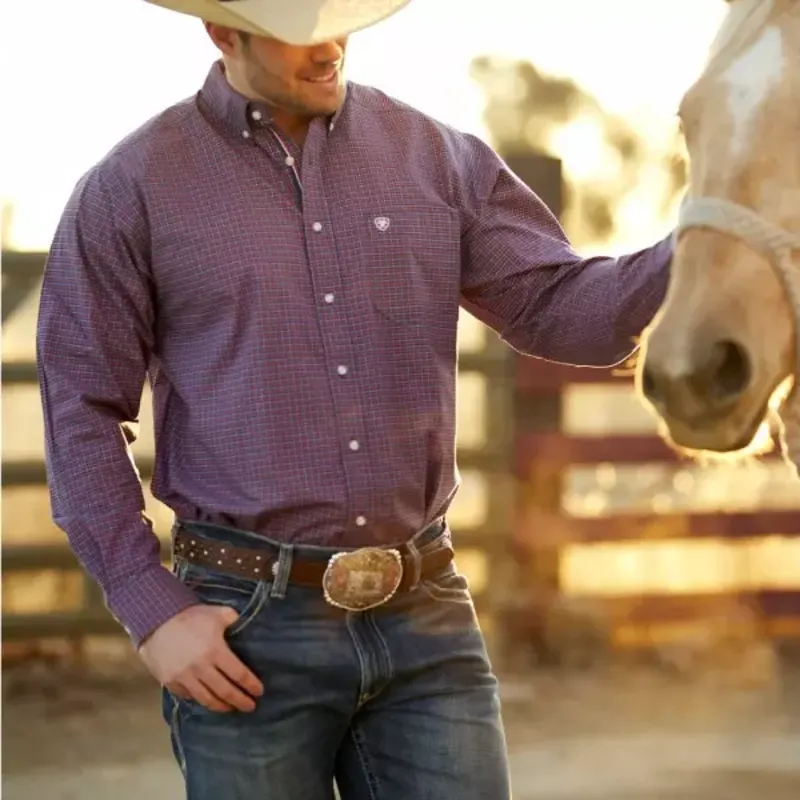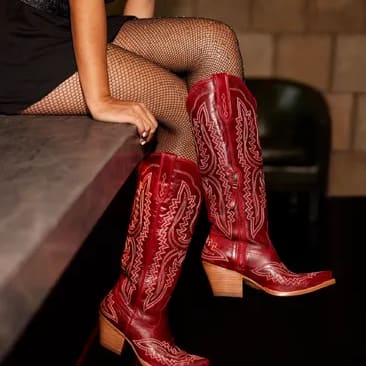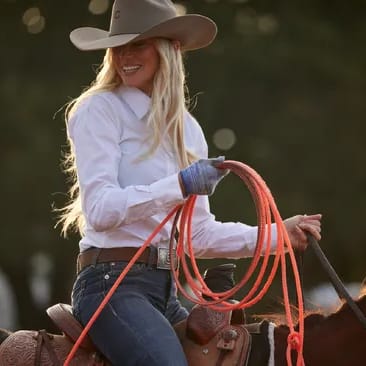
What are the Different Types of Western Horseback Riding?
Western horseback riding developed with the working ranch men and women who shaped the cowboy culture of the American West. Get familiar with the types of Western riding disciplines like barrel racing, reining and trail riding.
Western riding has roots in the European exploration of the Americas, when the Spanish reintroduced the majestic equus and established many of the mounted traditions still in practice today. Those traditions were honed by the American cowboy into the styles of Western riding we see today.
7 Western Horseback Riding Disciplines Explained
Read on to discover the different types of Western riding disciplines like barrel racing, reining and trail riding.
Western Riding Equipment and Attire
It’s easy to spot a Western rider, geared up in cowboy boots and Western-style jeans. They may also wear a cowboy hat and full chaps that cover the legs and protect them from branches and scrub on the trail. Western gear is highly functional, having evolved to serve working cowboys on the range.
Western saddles can differ in shape and build depending on the discipline, but typically feature a prominent horn and offer a deep, secure seat that keeps the rider tucked into the saddle despite tight turns and jostling. To have a free hand to carry a lariat rope while riding Western, riders typically neck rein, an indirect style of steering the horse by moving the rein across the horse's neck.
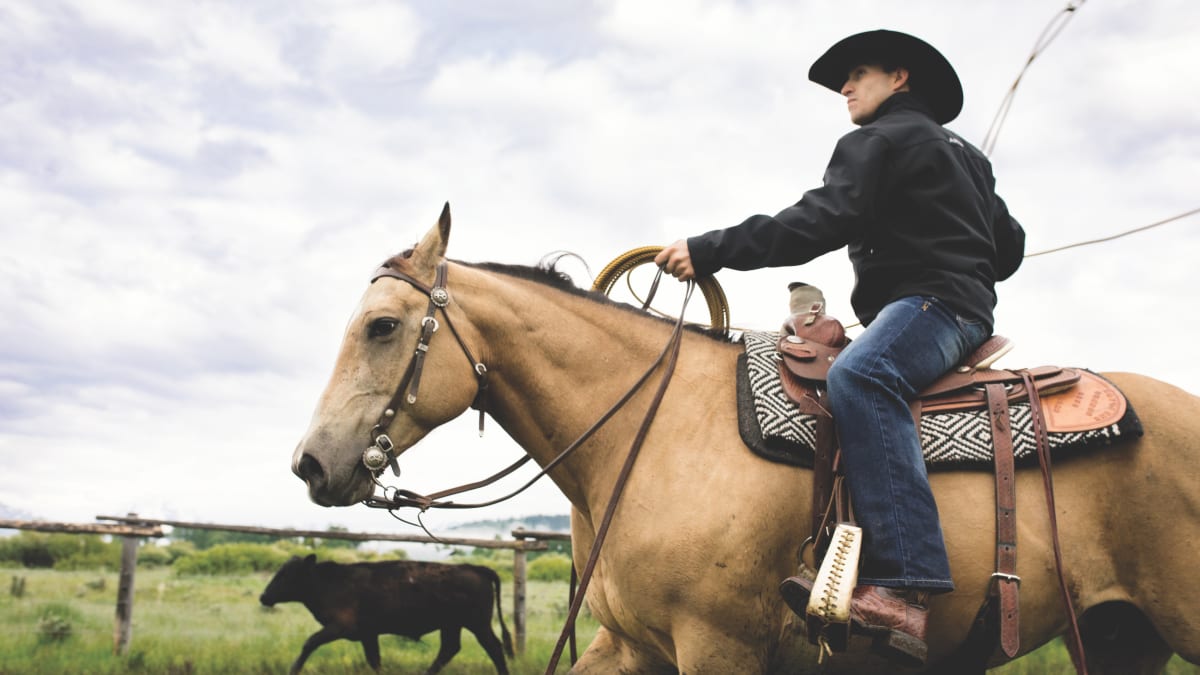
What Are the Different Types of Western Horseback Riding?
As one of the most varied sports in the world, the Western horse and rider have an array of options available for competition and recreation. Although there are many other Western disciplines such as gymkhana, endurance riding, mounted shooting and versatility ranch riding, the seven styles below are among the most common Western disciplines.
Western Pleasure
In Western pleasure, mounted riders demonstrate their horse’s gaits on the flat. At the judge's discretion, Western pleasure horses and riders are cued to walk, jog, lope and reverse. As opposed to the impulsion of the English “trot and canter,” Western riders aim to produce gaits that are generally slower and carried out with a lighter contact on the mouth—and less collection in the frame—than seen in most English disciplines. Judges assign points based on the quality of movement, responsiveness and disposition of the horse under saddle, among other factors.
Western Horsemanship
Horsemanship refers to the rider’s position in the saddle. Much like Western pleasure, Western horsemanship involves horses moving between gaits at the walk, jog and lope. However, in Western horsemanship, it is the position of the rider that’s evaluated for correctness and the effect of the aids. Quiet, balanced riders in good form, especially if on quality horses, perform well in horsemanship classes. English riders use the term “equitation” to refer to horsemanship. Equitation competitions are found on the omnibus at English hunter and saddle seat horse shows.
Reining
Reining demonstrates one of the most valued working ranch skills: the responsiveness of a horse to pressure. Today’s reiners have evolved from the necessity of ranch horses to stop and turn with excellent response and dexterity. Reining was born from cowboys’ inclination to show off their command of their horse. Today’s reiners demonstrate a pre-set pattern of skills and are rewarded for control and smoothness. Freestyle reining is a popular variation where riders perform a styled and set to music, usually in costume.
Cutting
Quick turns and good instincts are key in the sport of cutting. Rooted in ranch riding, where cowboys often needed to separate a cow from the herd, cutting is a Western discipline that demonstrates a cutting horses’ keen intuition while working cattle. Accompanied by two to four support riders on turn back horses, a cutting horse and rider outmaneuver a cow and hold it in the middle of the arena, blocking it from returning to the herd. The turn back horses help keep the herd organized while the cutting horse works a single cow. Turn back horses also put special pressure on the selected cow being cut so it continues trying to rejoin its friends. Cutters aim to showcase their horse’s fitness and eagerness to work cattle. Successful cutting horses must have a
strong interest in cattle and the instinctual ability to anticipate or interpret the behavior of the cow. Also called “cow sense,” this trait is a large part of what judges look for in modern pairs contesting in the sport, also factoring in a horse’s courage, appearance and the difficulty of the run. Riders are rewarded for keeping slack in their rein and allowing their horses to work the cow independently.
Barrel Racing
With the average time for a run coming in at 15 seconds, barrel racing’s fast-paced action makes it one of the most popular Western equestrian sports. At the professional level, barrel racing is exclusively for women. All about speed, riders race the clock to circle three barrels set in a cloverleaf pattern. Riders must keep all the barrels standing; should a barrel fall, a five-second penalty is added to their time. The horse and rider with the fastest timed run win.
Rodeo
Rodeo is a demonstration of several Western disciplines, where many riders compete in more than one event. American rodeos often have seven or eight different events that fall into one of two categories: roughstock events and timed events. Roughstock events include saddle bronc riding, bareback riding and bull riding—all scored based on the performance of both the rider and the stock. Timed events are all about speed and usually include barrel racing, team roping, calf or tie-down roping, steer wrestling and breakaway roping. Learn how eight common rodeo events are scored here.
Trail
Trail riding is a general term that, when used casually, refers to riding horses outside in the open air or on equestrian-friendly trails, but it’s also a reference to competitive trail riding. This discipline is not firmly rooted in the Western canon. In fact, riders will be accepted wearing either English or Western attire, but it is more commonly associated with Western riding due to the prevalence of Western style riding in the American West. Competitive trail requires mounted riders and their horses to navigate a series of obstacles that would be commonly found on the trail, including features like wooden bridges and water complexes. Riders are timed and courses are typically designed to be completed within five minutes.
Whether navigating trail obstacles or sorting cattle, modern Western horses need to be calm, obedient and versatile. These attributes have made the Quarter Horse breed the quintessential horse for Western disciplines. Prized for its strong, stocky build and quiet demeanor, the Quarter Horse, along with Paints and Appaloosas, are a popular choice for Western riders of all disciplines. If you’re headed to a rodeo or getting started with trail riding or horsemanship, Ariat’s Western clothing is designed to stand up to the rigors of Western riding.

